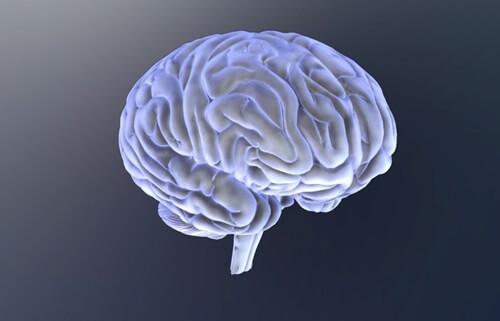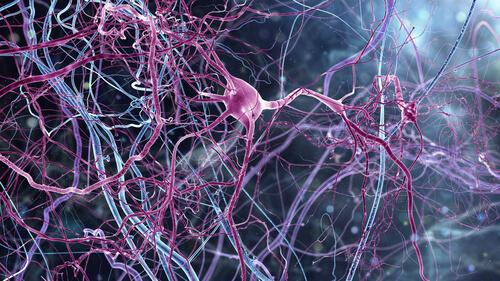The Brain of Children with Autism Spectrum Disorder


Written and verified by the psychologist Valeria Sabater
If the brain of a child with autism spectrum disorder was a house, every room would be filled with noise, it’d have complex wiring all over it, and its walls would be very sensitive to almost any stimulus. This excess of synapses or neural connections produces particular alterations in every child.
Scientific advances don’t really matter. It’s useless to continue learning about these neurological development disorders that affect a significant part of our population. The lack of awareness, stereotypes, and the misconceptions that we have about those who suffer from these disorders keep us from appreciating them as they are.
Undoubtedly, the problematic behavior of children and teenagers with ASD (autism spectrum disorder) can put our patience to the test. They may have a privileged mind or serious intellectual deficits. However, despite their ever-so-enigmatic world, they surprise us with their strengths, sensibilities, needs, and affection.
Their families are commendable. They promote ceaseless and energetic love that not only has to deal with stereotypes, but also tries to create alliances with other social agents: doctors, specialists, teachers, psychologists, and everyone else who’s devoted to these children.
Therefore, we can help them by trying to better understand their internal reality. Let’s delve deeper into this.

Hyperconnectivity in the brain of children with autism spectrum disorder
In 2014, a group of researchers carried out a revealing study at Columbia University. The data of this study was published in Neuron magazine and it explained two very important things:
- The already-mentioned particularity of the brain of children with autism spectrum disorder: the excess of synapses or connections between neurons.
- An experimental treatment that could regulate hyperconnectivity (a singular brain alteration that occurs before the age of three).
Also, we must keep in mind that in addition to this synaptic singularity, there are other associated problems. For example, communication problems between different brain areas.
The problem with synaptic pruning
From when we’re an embryo until the age of two, an incredible process called synaptogenesis takes place in the brain. During this stage, up to 40,000 new synapses are created per second.
- During that time, children have more neurons than they need. Therefore, as the brain develops, the most useful connections will be myelinated and the rest will be eliminated.
- Synaptic pruning occurs mainly in the cerebral cortex. This way, the processes that regulate executive functions such as thought, analysis, reflection, and attention are strengthened.
- By adolescence, this pruning eliminates almost half of these cortical synapses.
- The study concluded that in the case of children with ASD, this synaptic pruning only reached 16% instead of 50%.

The corpus callosum and brain communication
The brain of children with autism spectrum disorder also has problems with a relevant and significant structure called the corpus callosum.
- This structure is key to communication between different brain regions.
- Lynn Paul, a researcher at the California Institute of Technology, saw various alterations in the corpus callosum of autistic children. This can lead to problems in everyday social interactions, inability to grasp various types of information, misinterpretation, and a more rigid mental approach.
Heterogeneity in the brain of children with autism spectrum disorder
Researchers at the Yonsei University College of Medicine in Seoul carried out a study that pointed out that neuroimaging findings were very heterogeneous. Evidently, there are significant structural and functional abnormalities in the brain of children with autism spectrum disorder. However, it’s very rare to see two identical brains.
- As a result, each child will undoubtedly manifest different behaviors, deficits, and particularities within the autism spectrum.
- There are also genetic foundations that affect the neural circuits and the way in which the brain regions communicate. This explains why some children have great intellectual potential whilst others have serious problems with communicative processes.
- Nonetheless, the brain of children with autism spectrum disorder usually has trouble processing social and emotional stimuli.
- This doesn’t mean that these children don’t feel emotions. In fact, it’s quite the opposite. They need to feel loved, supported, and validated. However, they simply don’t know how to react to such stimuli.

Conclusion
The mTOR protein is currently being investigated. According to various studies, this protein may hinder synaptic pruning. This process is very important as it allows the brain to be able to create stronger neuronal connections.
However, there’s nothing conclusive to date. Therefore, we can only limit ourselves to knowing the particular needs of each child and responding in the best way to adjust to their particularities.
Fortunately, the number of specialized professionals in this field continues to grow every day. There are currently many specialists concerned about that 2% of the population.
Our aim is to better understand the reality of this group of individuals because they may seem listless and elusive. They may not want anyone to touch them or even look at them. However, we must remember that they do want and need us. We should strive to better understand their internal world.
If the brain of a child with autism spectrum disorder was a house, every room would be filled with noise, it’d have complex wiring all over it, and its walls would be very sensitive to almost any stimulus. This excess of synapses or neural connections produces particular alterations in every child.
Scientific advances don’t really matter. It’s useless to continue learning about these neurological development disorders that affect a significant part of our population. The lack of awareness, stereotypes, and the misconceptions that we have about those who suffer from these disorders keep us from appreciating them as they are.
Undoubtedly, the problematic behavior of children and teenagers with ASD (autism spectrum disorder) can put our patience to the test. They may have a privileged mind or serious intellectual deficits. However, despite their ever-so-enigmatic world, they surprise us with their strengths, sensibilities, needs, and affection.
Their families are commendable. They promote ceaseless and energetic love that not only has to deal with stereotypes, but also tries to create alliances with other social agents: doctors, specialists, teachers, psychologists, and everyone else who’s devoted to these children.
Therefore, we can help them by trying to better understand their internal reality. Let’s delve deeper into this.

Hyperconnectivity in the brain of children with autism spectrum disorder
In 2014, a group of researchers carried out a revealing study at Columbia University. The data of this study was published in Neuron magazine and it explained two very important things:
- The already-mentioned particularity of the brain of children with autism spectrum disorder: the excess of synapses or connections between neurons.
- An experimental treatment that could regulate hyperconnectivity (a singular brain alteration that occurs before the age of three).
Also, we must keep in mind that in addition to this synaptic singularity, there are other associated problems. For example, communication problems between different brain areas.
The problem with synaptic pruning
From when we’re an embryo until the age of two, an incredible process called synaptogenesis takes place in the brain. During this stage, up to 40,000 new synapses are created per second.
- During that time, children have more neurons than they need. Therefore, as the brain develops, the most useful connections will be myelinated and the rest will be eliminated.
- Synaptic pruning occurs mainly in the cerebral cortex. This way, the processes that regulate executive functions such as thought, analysis, reflection, and attention are strengthened.
- By adolescence, this pruning eliminates almost half of these cortical synapses.
- The study concluded that in the case of children with ASD, this synaptic pruning only reached 16% instead of 50%.

The corpus callosum and brain communication
The brain of children with autism spectrum disorder also has problems with a relevant and significant structure called the corpus callosum.
- This structure is key to communication between different brain regions.
- Lynn Paul, a researcher at the California Institute of Technology, saw various alterations in the corpus callosum of autistic children. This can lead to problems in everyday social interactions, inability to grasp various types of information, misinterpretation, and a more rigid mental approach.
Heterogeneity in the brain of children with autism spectrum disorder
Researchers at the Yonsei University College of Medicine in Seoul carried out a study that pointed out that neuroimaging findings were very heterogeneous. Evidently, there are significant structural and functional abnormalities in the brain of children with autism spectrum disorder. However, it’s very rare to see two identical brains.
- As a result, each child will undoubtedly manifest different behaviors, deficits, and particularities within the autism spectrum.
- There are also genetic foundations that affect the neural circuits and the way in which the brain regions communicate. This explains why some children have great intellectual potential whilst others have serious problems with communicative processes.
- Nonetheless, the brain of children with autism spectrum disorder usually has trouble processing social and emotional stimuli.
- This doesn’t mean that these children don’t feel emotions. In fact, it’s quite the opposite. They need to feel loved, supported, and validated. However, they simply don’t know how to react to such stimuli.

Conclusion
The mTOR protein is currently being investigated. According to various studies, this protein may hinder synaptic pruning. This process is very important as it allows the brain to be able to create stronger neuronal connections.
However, there’s nothing conclusive to date. Therefore, we can only limit ourselves to knowing the particular needs of each child and responding in the best way to adjust to their particularities.
Fortunately, the number of specialized professionals in this field continues to grow every day. There are currently many specialists concerned about that 2% of the population.
Our aim is to better understand the reality of this group of individuals because they may seem listless and elusive. They may not want anyone to touch them or even look at them. However, we must remember that they do want and need us. We should strive to better understand their internal world.
All cited sources were thoroughly reviewed by our team to ensure their quality, reliability, currency, and validity. The bibliography of this article was considered reliable and of academic or scientific accuracy.
- Stephanie H. Ameis, Jason P. Lerch, Margot J. Taylor, A Diffusion Tensor Imaging Study in Children With ADHD, Autism Spectrum Disorder, OCD, and Matched Controls: Distinct and Non-Distinct White Matter Disruption and Dimensional Brain-Behavior Relationships. American Journal of Psychiatry, 2016; appi.ajp.2016.1 DOI: 10.1176/appi.ajp.2016.15111435
This text is provided for informational purposes only and does not replace consultation with a professional. If in doubt, consult your specialist.







